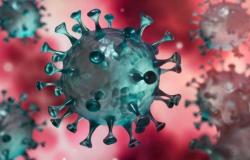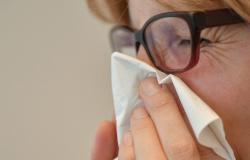A team of Grenoble researchers has set up an “artificial lung” in order to better understand the consequences of pollution peaks on health. They study not only the amount of fine particles in the air, but also the chemical composition of the particles.
Each year, between 150 and 160 premature deaths are linked to fine particles in Grenoble. Across France, this figure rises to 40,000 deaths. This is only the visible side of the iceberg: the development of health problems being the great statistical unknown.
Invisible and underestimated, air pollution is a major public health problem but its consequences on the human body are still poorly understood. In Grenoble, the Prédict’Air team of scientists is developing a better real-time particle analysis system with an “artificial lung”. This patented equipment simulates in real time the inhalation of atmospheric particles to determine their toxicity on the lungs.
Currently, air quality is determined by the quantity of fine particles that must not be exceeded over a given period. “But behind this quantity, it is a black box“, explains Gaëlle Uzu, research director at the Research Institute for Development (IRD), assigned to the Institute of Environmental Geosciences (IGE) at Grenoble Alpes University. Only 20% of the molecules present in the air are identifiable.
The researcher affirms that, contrary to popular belief, a high dose is not enough to determine toxicity. Other parameters must be taken into account, such as its chemical composition: “The toxicity of a particle comes from its size, its quantity but above all from its chemical composition. In a cubic meter of air, there are at least 10,000 different organic molecules and currently there is no system to identify them all.”
With a budget of around 2 million euros, the Prédict’Air project is supported by the University of Grenoble Alpes, Atmo Auvergne-Rhône-Alpes and several local authorities. Unique in Europe, it started in 2019 within the IGE. The team is made up of around ten researchers and aims to improve the way air quality is measured at European level.
To achieve this, scientists work with the “oxidizing potential” indicator. “It is the only indicator that makes the link between the level of particle pollution and the health effect on the human body.“, explains Stéphane Socquet, production director at ATMO Auvergne-Rhône-Alpes. This “oxidative stress” is the cause of many cardiorespiratory diseases.
Measurements and samples are currently being taken at 27 sites in France. They are then analyzed by the Prédict’Air team within the IGE. The first results are conclusive.
“Today, we are able to make rankings of cities with a higher oxidizing potential than others. We realize that certain rural areas have an average annual oxidizing potential 3 to 5 times lower than urban areas.says Gaëlle Uzu.
Another hypothesis tends to be confirmed. That of a “lag effect”, a latency between pollution peaks and adverse effects on health: “We notice that in Grenoble, when there is a peak in pollution, we are more likely to have an abnormal examination three days later.“, explains cardiologist Gilles Barone Rochette, professor specializing in coronary diseases at Grenoble-Alpes University Hospital.
If confirmed, this hypothesis could constitute a major scientific and medical advance. “We could better anticipate hospital activities and plan more or fewer teams depending on air quality“, Professor Gilles Barone Rochette imagines.






